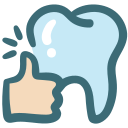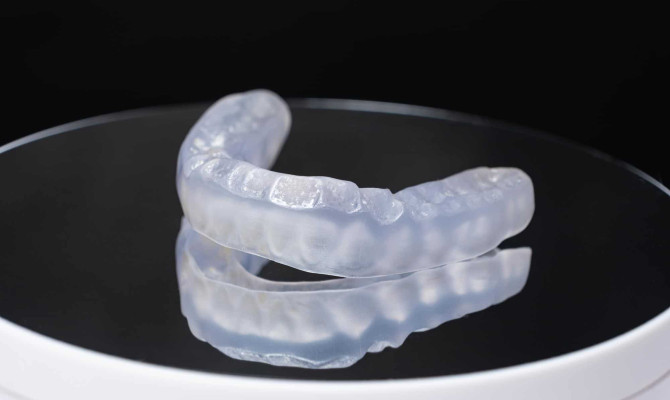All about flossing

- Flossing
- 16 Aug 2023
Overview
What is flossing?
Using a fine thread or cord to scrape food debris and plaque from between teeth and along the gum line is the dental hygiene technique known as flossing.
It is an essential part of a dental hygiene routine that guards against tooth decay, gum disease, and foul breath. Learn how to floss, when to floss, and its benefits in this article.1Overview| Researched based study from Nlm.nih.gov

Benefits

Benefits of flossing
Remove germs and plaque
- Food particles, plaque, and germs are helped to get rid of between teeth. Maintaining such substances can result in bad breath, gum disease, and tooth decay.
Prevents gum disease
- If left untreated, this frequent issue can result in tooth loss. By removing the germs that cause gum disease, flossing lowers your chance of getting the ailment.
Enhances dental hygiene
- It is essential to maintain appropriate oral hygiene in addition to brushing. Your likelihood of getting cavities and other oral health issues can be decreased.
Reduce foul breath
- Food particles and oral germs can cause bad breath. Flossing will leave your mouth feeling clean and fresh by assisting in their removal.
Reduces costs
- It costs less to have dental work done if oral health issues are avoided. Keeping your mouth healthy could save you from needing expensive dental procedures.2Benefits| Researched based study from Nhs.uk
Types
Types of floss
Nylon floss
- The most common type of floss is created from nylon strands. It is usually affordable, widely available, and comes in waxed and unwaxed varieties.
A PTFE floss
- Expanded polytetrafluoroethylene, a tough and durable form of plastic, is used in its construction. It is an excellent choice for folks with narrow gaps between their teeth since it slips smoothly between them.
Floss with flavor
- Includes flavors like mint, cinnamon, and berry, among others. This may also aid in breath freshening.
Waxed floss
- It has a wax coating, making it easier to slip between teeth. People with small spaces or flossing uncomfortably should consider this option.
Unwaxed floss
- This option is suitable for those with more space between their teeth because it is uncoated.
Tape floss
- Contrary to traditional floss, it is broader and flatter.
It’s crucial to pick floss that suits your specific needs and that you feel confident using.3Types| Researched based study from Nlm.nih.gov
Method
How do you correctly floss?
- Start with a length of floss of 18 to 26 inches. The remaining portion should be wound around the middle finger of the opposite hand after the first. Hold it tight with your fingers.
- Move it back and forth between your teeth with a gentle motion. Avoid snapping into position, as this might damage your gums. Instead, guide it with a smooth sawing motion.
- The floss should form a C shape around the base of each tooth. Gently move it against the side of each tooth. Avoid pressing too firmly, as this might harm your gums.
- Use a different part of floss for every tooth. Release another length of floss from your fingertips as you go from one tooth to the next. Afterward, rinse your mouth with water to remove any food debris.
- Throw out the used floss. Then, after wrapping it around your fingers, discard it.2Method| Researched based study from Nhs.uk
Mistakes
Common mistakes to avoid
Using excessive force
- Gentle flossing should not hurt or result in bleeding. Your gums might become damaged or even start to recede if you use too much effort.
Missing teeth
- If you skip any tooth, germs and food particles may be left behind, therefore floss between all of your teeth.
Using the incorrect method
- Ask your dentist or dental hygienist for advice if you’re unsure of how to correctly floss.
Reusing floss
- It is possible to spread germs and debris from one place to another while using the same item to clean several teeth.
Too-rapid flossing
- Take your time when flossing to make sure you are properly cleaning every tooth.
Not routinely flossing
- Regular flossing is important to prevent plaque and bacteria development.2Mistakes| Researched based study from Nhs.uk
How often should I floss my teeth?
- At least once a day flossing is advised. Some individuals, however, may benefit from flossing more frequently. You should floss more regularly than once a day, for instance, if you have more gaps between your teeth or are more likely to get gum disease or tooth decay.
Tips for careful flossing with braces
Orthodontic situations can be a little more complex, and it could require a little more time and effort. However, it’s still crucial to floss frequently. Here are a few tips:
Use a floss threader
- You may thread the floss through the wire of your braces with this little plastic tool. Use it by pulling a piece of floss through the loop beneath the wire of your braces.
Use waxed floss
- It is simpler to fit between your teeth since they are less prone to rip or get snagged on your braces.
Be gentle
- Make sure to floss between all your teeth, even those with braces.
Consider using an interdental brush
- It is a little brush that is useful for cleaning in and around braces.Select the size that best fits you since they come in various shapes and sizes.
Use a water flosser
- It is a tool that uses a water spray to clean in and around braces and between teeth. If flossing with wearing braces is too challenging, this is an excellent substitute.1Mistakes| Researched based study from Nlm.nih.gov
What are the signs of flossing incorrectly?
- Bleeding gums-When you floss, if your gums bleed, you might be flossing too forcefully or not using the right technique.
- Any discomfort or pain-Regular flossing may not be completely eliminating all of the germs and food particles if you feel any pain or discomfort.
- Having trouble flossing-If you have any discomfort or difficulty, you may need to change your method or try a new kind of floss.
Frequency
What time of day should you floss?
- The right time to floss might differ from person to person. While some prefer to do it after brushing, others like it first. It is critical to floss at least once per day, regardless of when you do it.
- But there are some advantages to flossing prior to brushing. Before using your toothbrush to clean between teeth, floss first to help loosen and remove food particles. Additionally, this can increase the effectiveness of your mouthwash and toothpaste by enabling them to reach more surfaces.
- However, some people prefer to do it after brushing because it can aid in removing any lingering food particles or plaque that the toothbrush might have missed.
- In addition, it might help release any fluoride or other beneficial components of your toothpaste that may have become stuck between your teeth.4Frequency| Researched based study from Cdc.gov
Choose a time that works best for you, and keep to it.
Takeaway
Key Takeaways
- Plaque may be effectively removed, and flossing can prevent gum disease.
- Due to the bacteria in the mouth that cause gum disease and enter the circulation, and contribute to inflammation in other regions of the body, regular flossing has been linked to a decreased risk of heart disease and other health issues.
- Thus, it is a straightforward yet efficient method of maintaining proper dental hygiene.
Any feedback on this article?
 This Articles content was accurate
This Articles content was accurate Very Informative Article
Very Informative Article I have a question or a comment
I have a question or a comment
 This article contains inaccurate content
This article contains inaccurate content This article was not helpful
This article was not helpful I have a question or a comment
I have a question or a comment
We appreciate your helpful feedback!
Checkout our social pages
References
-
National Library of Medicine
Flossing for the management of periodontal diseases and dental caries in adults | Overview | Mistakes
-
National Health Service
Why should I use dental floss? | Benefits | Methods | Mistakes
-
National Library of Medicine
Evaluation of floss types for interproximal plaque removal | Types
-
Centers for Disease Control and Prevention
Prevalence of daily flossing among adults by selected risk factors for periodontal disease— United States, 2009-2014 | Frequency






































